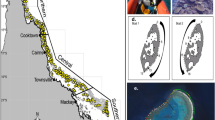Abstract.
In general the most attractive and economically valuable reefs in the world are found in developing countries. Because of these attributes, they have also become the most endangered. Due to anthropogenic threats to their productivity, there is a growing need for management. Programs for their conservation and rehabilitation are being mounted at local, regional, and international levels. Local efforts are widely distributed, showing signs of both failure and success. The situation in developing countries differs from that which prevails in developed countries for various reasons, including level of awareness, infrastructure, and law enforcement. A case history of saving a coral reef ecosystem is described in this study. It involves a recent plan to build a cement factory in the Philippines at Bolinao.
Similar content being viewed by others
Author information
Authors and Affiliations
Additional information
Accepted: 25 November 1996
Rights and permissions
About this article
Cite this article
Gomez, E. Reef management in developing countries: a case study in the Philippines. Coral Reefs 16 (Suppl 1), S3–S8 (1997). https://doi.org/10.1007/s003380050236
Issue Date:
DOI: https://doi.org/10.1007/s003380050236




